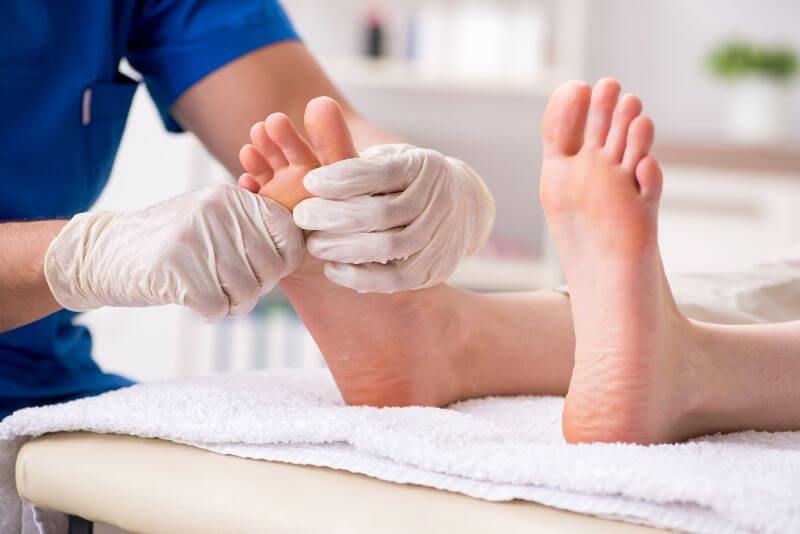If your lower legs or feet are causing trouble, who should you see – a podiatrist, your GP or some other specialist?
If you’re worried or in pain the last thing you want is a stressful scrabble through the internet to figure out who can help.
Happily, we have the answer. If you’re experiencing any pain or if things just don’t look right from the knees down, a podiatrist is usually the best person to see. This includes knees, ankles, feet and toes.
Common Symptoms and Conditions
Ongoing Pain
If pain in the feet persists longer than 48 hours, it’s wise to get it checked out. Most things don’t heal themselves and are likely to get worse if they’re ignored. Don’t let a small problem turn into a big one.
Troublesome Toes
Discoloured toes can indicate a fungal infection, and this will affect the nail and skin underneath. Your podiatrist will treat it with oral and topical medications (applied to the skin). They can also surgically remove the affected skin if necessary.
Ingrown toenails are very common. They’re extremely painful and lead to swelling and inflammation if left untreated. A podiatrist can prescribe anti-inflammatory medication and safely remove the toenail to allow healing.
Fungal Infections
These thrive in warm, moist conditions so the wrong shoes or socks are often to blame. Athlete’s foot is a common example that won’t disappear without help. The correct medication and ointments will clear things up and your podiatrist will also advise you about good foot health – the best way to avoid a recurrence.
Lumps, Bumps and Calluses
Corns, warts, bunions and calluses (hard patches of skin) become sore as they rub against your shoes. This affects the way you walk as you try to avoid painful areas. The knock-on effect can be postural issues and a bad back but there’s no need for things to go this far.
These conditions can be treated in various ways including topical creams, pain relief medication, insoles and surgery to reduce and remove the lump, as appropriate.
Swelling, Warmth, Redness and Tingling
Don’t ignore sudden changes in the appearance of your feet or toes. Swelling and redness in toe joints or ankles may be a sign of arthritis or injury. Swelling and tingling can also indicate circulation issues – a situation that should never be overlooked.
Diabetes
If you suffer from diabetes, problems with your feet are never far away. Circulation problems, Athlete’s foot, fluid retention in the ankles and feet, ulcers and bacterial infections are typical conditions for diabetics.
Sufferers need to be particularly vigilant as nerve damage is a common side effect. The resultant numbness means problems often go undetected until they become serious.
There’s no need to struggle with this condition on your own. Regular check-ups with your podiatrist ensure problems are spotted before they become serious.
Injuries
If you’ve suffered an injury to your lower leg, ankles or feet a podiatrist can support your recovery. Stress fractures, joint problems, bunions and blisters are common for sportspeople or anyone whose work places a lot of stress on their feet.
Your podiatrist can prescribe custom orthotics and advise on the right kind of footwear. They will also help with exercise and advise on the correct footwear for your activity, or indeed, for any occasion (the wrong shoes are responsible for all sorts of problems, whoever you are).
Expert Care at Feet By Pody
For specific problems or the reassurance of regular maintenance, pop in and see us at one of our London clinics.

